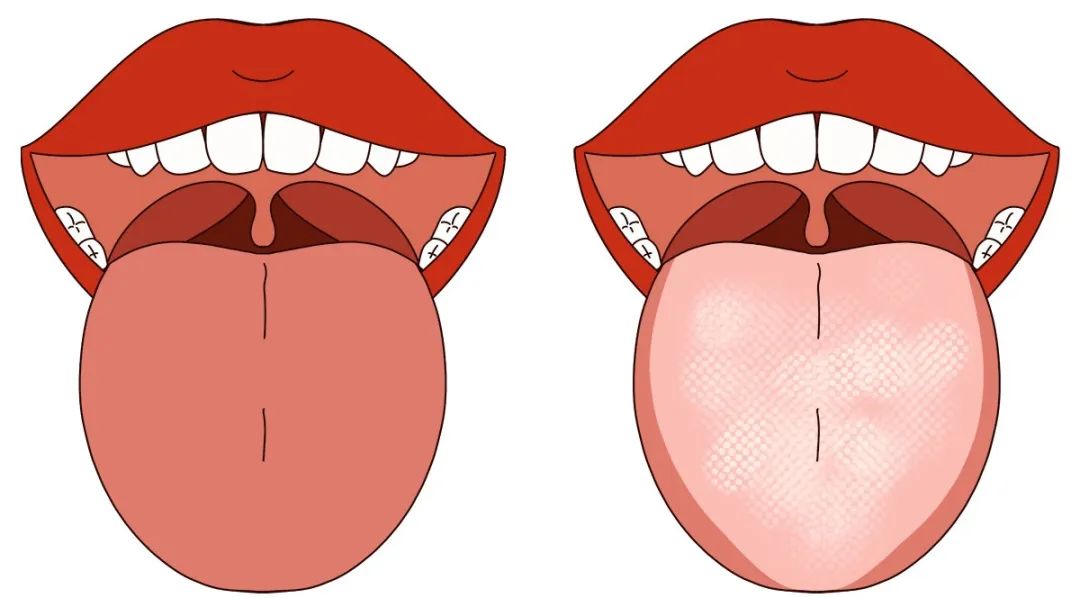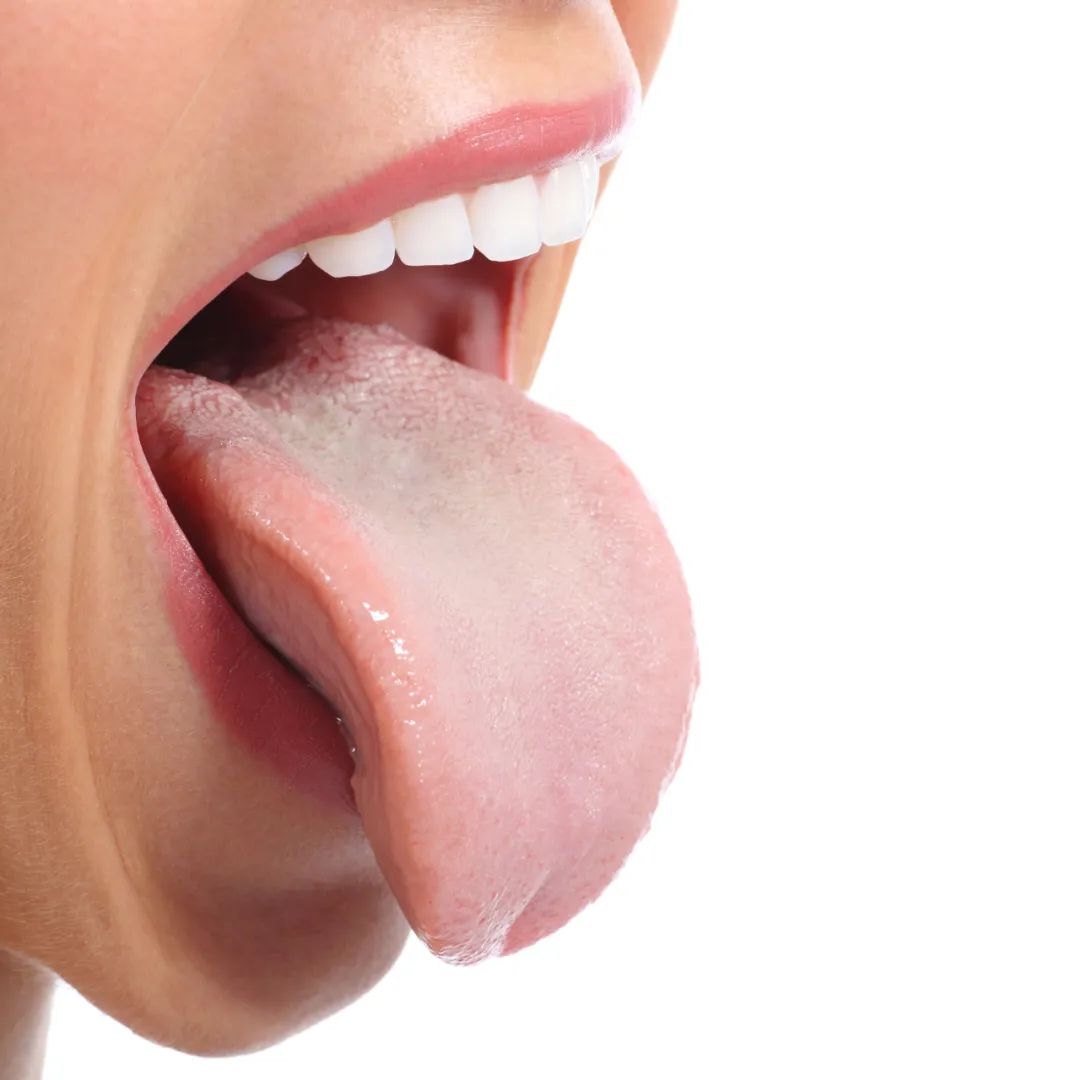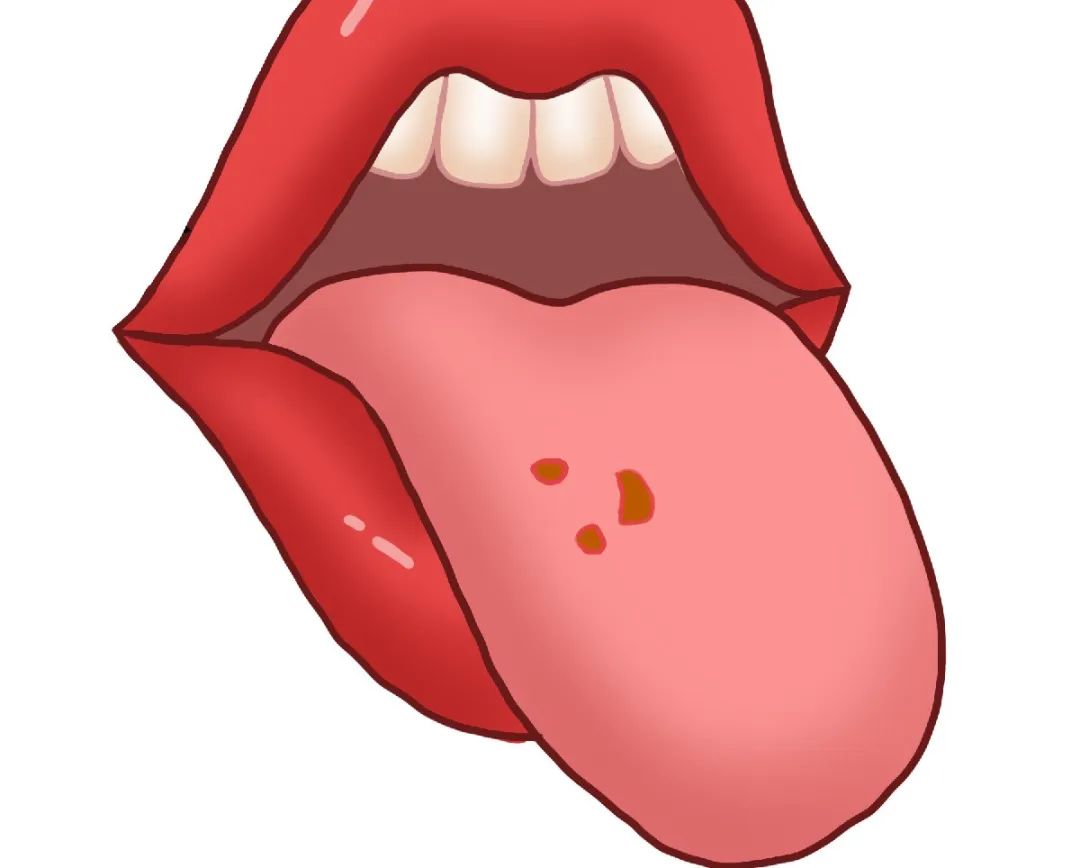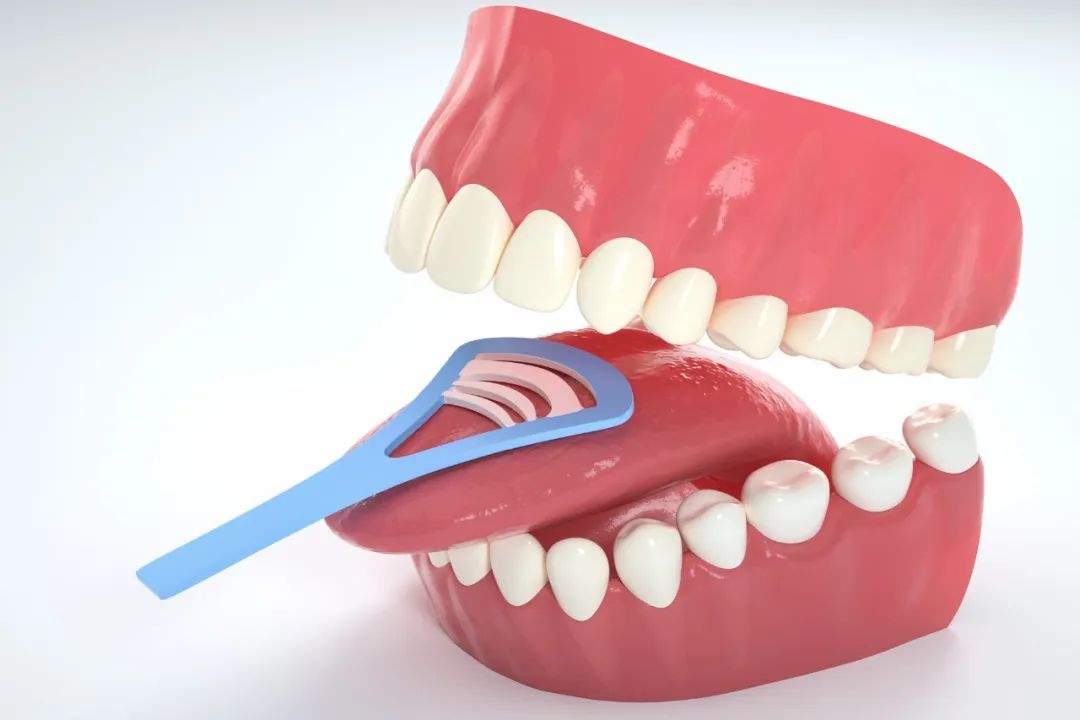The tongue is an important organ of the human body, responsible for distinguishing flavors, regulating sound, and assisting in swallowing. Additionally, it serves as a barometer of overall health. In Traditional Chinese Medicine (TCM), “observing the tongue coating” is a crucial part of the diagnostic system. By examining changes in the tongue coating, practitioners can assess the vitality of the body’s Qi, determine the depth of illness, and predict the progression of disease.





 A normal tongue is generally light red, appearing moist and clean, and is relatively soft and flexible. The tongue coating should be thin, evenly distributed, and moderately dry. However, most people often do not meet this standard; their tongues may be dark purple, cracked, or covered with a thick layer of coating… The healthier the tongue looks, the healthier the person is. Conversely, the worse the appearance of the tongue, the poorer the health. So, tongue diagnosis is about “aesthetics.” Have you observed your tongue? Why not check it in the mirror and see the changes in your tongue coating? If the tongue coating exhibits the following conditions, caution is warranted, as they may indicate hidden health issues such as hypertension, liver disease, or gastrointestinal disorders. If these conditions persist without improvement, they could lead to further deterioration of health.
A normal tongue is generally light red, appearing moist and clean, and is relatively soft and flexible. The tongue coating should be thin, evenly distributed, and moderately dry. However, most people often do not meet this standard; their tongues may be dark purple, cracked, or covered with a thick layer of coating… The healthier the tongue looks, the healthier the person is. Conversely, the worse the appearance of the tongue, the poorer the health. So, tongue diagnosis is about “aesthetics.” Have you observed your tongue? Why not check it in the mirror and see the changes in your tongue coating? If the tongue coating exhibits the following conditions, caution is warranted, as they may indicate hidden health issues such as hypertension, liver disease, or gastrointestinal disorders. If these conditions persist without improvement, they could lead to further deterioration of health.

Changes in the Tongue
May Indicate Illness
01
Red Tongue
 A healthy tongue should be light pink. Clinically, individuals with cardiovascular diseases may exhibit a red tongue, often accompanied by symptoms such as anxiety, palpitations, premature beats, and tachycardia. From a TCM perspective, this indicates a deficiency of Heart Yin. When Heart Yin is deficient, it is easy to generate empty heat, which can trigger cardiovascular diseases.
A healthy tongue should be light pink. Clinically, individuals with cardiovascular diseases may exhibit a red tongue, often accompanied by symptoms such as anxiety, palpitations, premature beats, and tachycardia. From a TCM perspective, this indicates a deficiency of Heart Yin. When Heart Yin is deficient, it is easy to generate empty heat, which can trigger cardiovascular diseases.

02
White and Thick Tongue Coating
 If the tongue coating is white and appears less rosy, it suggests a condition of deficiency and coldness in the body. This “deficiency and coldness” primarily refers to Blood deficiency. As we know, blood is red, and for the tongue to appear rosy, it requires sufficient blood supply. Insufficient blood supply results in a pale tongue. Additionally, a thick tongue coating indicates a significant presence of coldness in the body, which can lead to a relative deficiency of Yang Qi. Yang Qi is the driving force for blood circulation; when it is insufficient, blood circulation slows down, leading to a less filled vascular system in the tongue, making it appear pale. A thick tongue coating may also be related to various factors such as poor oral hygiene, reduced saliva, prolonged fasting, colds, or systemic infections. Furthermore, conditions like oral leukoplakia or oral candidiasis can also cause a white tongue coating or white spots on the tongue.
If the tongue coating is white and appears less rosy, it suggests a condition of deficiency and coldness in the body. This “deficiency and coldness” primarily refers to Blood deficiency. As we know, blood is red, and for the tongue to appear rosy, it requires sufficient blood supply. Insufficient blood supply results in a pale tongue. Additionally, a thick tongue coating indicates a significant presence of coldness in the body, which can lead to a relative deficiency of Yang Qi. Yang Qi is the driving force for blood circulation; when it is insufficient, blood circulation slows down, leading to a less filled vascular system in the tongue, making it appear pale. A thick tongue coating may also be related to various factors such as poor oral hygiene, reduced saliva, prolonged fasting, colds, or systemic infections. Furthermore, conditions like oral leukoplakia or oral candidiasis can also cause a white tongue coating or white spots on the tongue.

03
Red and White Tongue
 Certain areas of the tongue may appear red while others are white, and these characteristics may shift and change shape. This condition is related to genetic, immune, and endocrine factors. Generally, these red and white areas are not harmful to the body and will resolve on their own over time. However, if these spots persist for more than two weeks, it is essential to seek medical examination.
Certain areas of the tongue may appear red while others are white, and these characteristics may shift and change shape. This condition is related to genetic, immune, and endocrine factors. Generally, these red and white areas are not harmful to the body and will resolve on their own over time. However, if these spots persist for more than two weeks, it is essential to seek medical examination.

04
Ulcers on the Tongue
 Ulcers on the tongue often occur on the edges and underneath, frequently caused by trauma from teeth, leading to traumatic ulcers. It is important to note that ulcers under the tongue, although painless, may be persistent white bumps that could indicate a mucous cyst, which may require surgical removal.
Ulcers on the tongue often occur on the edges and underneath, frequently caused by trauma from teeth, leading to traumatic ulcers. It is important to note that ulcers under the tongue, although painless, may be persistent white bumps that could indicate a mucous cyst, which may require surgical removal.

05
Tongue Pain
 Tongue pain is usually associated with oral ulcers and injuries to the tongue. Additionally, it may be related to certain diseases. External stimuli such as teeth grinding, misaligned teeth, as well as conditions like burning mouth syndrome, diabetes, anemia, and oral cancer can all cause tongue pain.
Tongue pain is usually associated with oral ulcers and injuries to the tongue. Additionally, it may be related to certain diseases. External stimuli such as teeth grinding, misaligned teeth, as well as conditions like burning mouth syndrome, diabetes, anemia, and oral cancer can all cause tongue pain.

06
Stasis Spots on the Tongue
 For individuals with cardiovascular diseases, a dark purple tongue or stasis spots, accompanied by symptoms such as palpitations, shortness of breath, and even insomnia or chest pain, may indicate cardiovascular issues. If accompanied by dizziness or headaches, it may suggest cerebrovascular problems. If you notice various abnormalities in your tongue, it is crucial to take them seriously and seek professional medical examination.
For individuals with cardiovascular diseases, a dark purple tongue or stasis spots, accompanied by symptoms such as palpitations, shortness of breath, and even insomnia or chest pain, may indicate cardiovascular issues. If accompanied by dizziness or headaches, it may suggest cerebrovascular problems. If you notice various abnormalities in your tongue, it is crucial to take them seriously and seek professional medical examination.

Brush Your Tongue While Brushing Your Teeth
Many people only brush their teeth daily and rarely remember to clean their tongue coating, yet maintaining tongue hygiene is crucial. The tongue coating harbors numerous bacteria, almost acting as a bacterial culture medium, with some pathogenic bacteria that cause cavities and periodontal disease residing there. Moreover, some bacteria on the tongue can break down proteins, leading to bad breath. Neglecting tongue hygiene can easily lead to bacterial infections, especially when oral ulcers or tooth damage occur.

Therefore, it is recommended to brush your tongue while brushing your teeth, but do not use a toothbrush directly. You can use a specialized tongue scraper or the back of a toothbrush designed for this purpose. When brushing the tongue, extend it as far as possible, starting from the root and brushing gently. This will help remove some of the tongue coating while effectively reducing bad breath. Today, I would like to recommend a simple method to improve tongue flexibility that can be done anytime, anywhere, just by moving your tongue.Bite Your Tongue You can bite your tongue anytime, as long as you do not apply excessive force or break the tongue.Move Your Tongue The nerves of the tongue connect to the brain, and a significant symptom of aging is tongue stiffness. Therefore, in addition to biting your tongue, you can also exercise your tongue, referred to as “moving the tongue.” Regularly moving your tongue can indirectly stimulate the brain, preventing brain atrophy and promoting overall health. Consistency is key to maintaining vitality in old age.1. After sitting down, gently press the tip of your tongue against the upper palate, moving it back and forth about 30 times. When saliva increases, rinse your mouth several times, then swallow in three portions.2. Use the tip of your tongue to lick the inner gums, moving from top to bottom, circling around the upper and lower gums for 30 circles each.3. Use the tip of your tongue to lick the inside of the cheeks on the upper and lower lips for 30 circles, or move the tongue side to side for 30 times, swallowing in three portions when saliva increases. These methods can be performed independently or in combination, adjusting the number of repetitions based on personal condition.Biting and moving the tongue for health is simple and effective, can be done anytime and anywhere, and costs nothing. So, let’s get started!
Regularly moving your tongue can indirectly stimulate the brain, preventing brain atrophy and promoting overall health. Consistency is key to maintaining vitality in old age.1. After sitting down, gently press the tip of your tongue against the upper palate, moving it back and forth about 30 times. When saliva increases, rinse your mouth several times, then swallow in three portions.2. Use the tip of your tongue to lick the inner gums, moving from top to bottom, circling around the upper and lower gums for 30 circles each.3. Use the tip of your tongue to lick the inside of the cheeks on the upper and lower lips for 30 circles, or move the tongue side to side for 30 times, swallowing in three portions when saliva increases. These methods can be performed independently or in combination, adjusting the number of repetitions based on personal condition.Biting and moving the tongue for health is simple and effective, can be done anytime and anywhere, and costs nothing. So, let’s get started!
References: Health Times, Life Times, Health China


